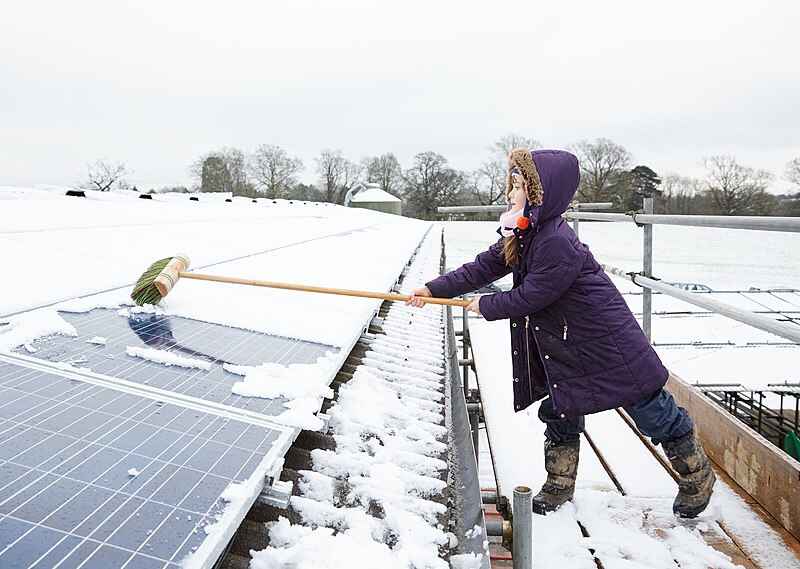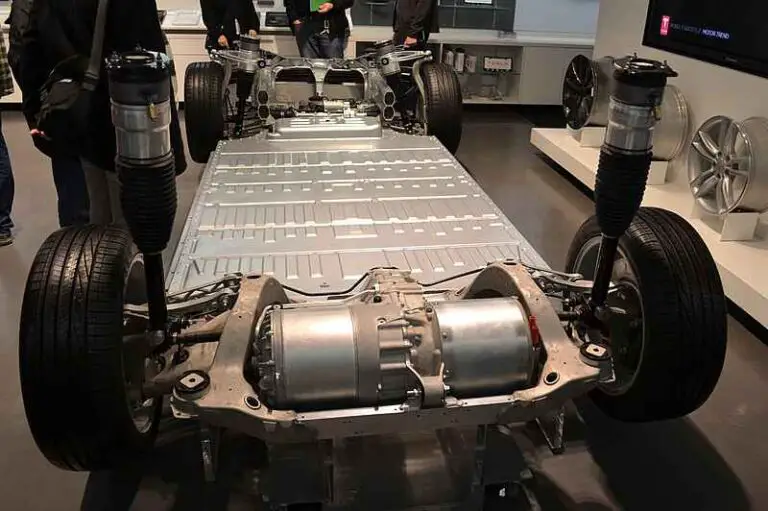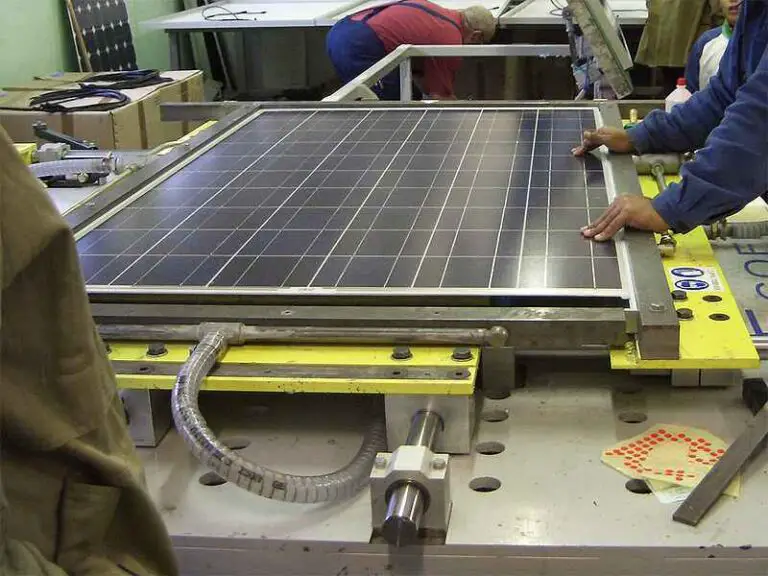7 Advantages of Solar Panels Explained
Advantages of solar panels are; energy cost-savings, simple and sustainable design, pollution-free use, relatively-long service life, low maintenance requirement, adaptability, and avenue for innovation.
This article discusses the advantages of solar panels, as follows;
1). Energy Cost-Savings (as one of the Advantages of Solar Panels)
One of the most important advantages of solar panels is the fact that they make it possible for renewable solar energy to be used in place of non-renewable energy resources like gasoline from petroleum [3].
This can lead to significant savings in the cost of electricity, especially where (or when) the price of non-renewable energy is high.
Solar panels are among the most cost-efficient solar energy technologies, because of their relative simplicity of design, installation and maintenance.
In addition to being much simpler and cheaper than some active solar devices, panels are versatile and adaptable, and can be integrated with other technologies including wind turbines and wave converters, to form hybrid systems [1].
A 5kW solar system will save the owner about $ 1,679 per year, based on a cost per kilowatt of 23 cents, and an electricity generation-rate of 20 kW per day on average.
Factors to consider when estimating the cost-saving capacity of a solar system or panel include; regional climate, length of exposure to (fairly-intense) solar radiation per day, size, orientation and design of the panel, among others.
High-quality solar panels can yield significant return on investment by substituting for fossil fuel as a sole, or backup, energy system.
2). Simple and Sustainable Design
The basic design of a solar panel is a framework of interconnected photovoltaic (PV) modules, which are in turn comprised of simple photovoltaic cells made from materials like silicon [7].
To design a simple solar PV system, the main requirements are the photovoltaic modules, which can be connected to each other by simple circuit-wiring, and held in a laminated glass frame with metallic rims.
Solar panels can be sustainable provided they are made from non-toxic raw materials that can be recycled.
Simplicity of design is a huge advantage for solar panels, and sets them apart from other clean energy technologies that often feature sophisticated components and configurations.
Because of their simplicity, solar panels are often integrated fully into buildings, as a core component of green building design [9]. This could be in the form of solar shingles, or as conventional framed panels.
The design of solar panels is sustainable because it does not cause significant alteration of the aesthetic attributes of a building or structure. Solar panel design is also flexible, as it can be adjusted to meet specific conditions.

3). Pollution-Free Use (as one of the Advantages of Solar Panels)
Solar panels reduce pollution which occurs in the process of energy transfer and conversion, because they depend on electromagnetic radiation from the Sun, for their operation.
Because solar energy does not involve any form of combustion on the Earth's surface, its usage is a relatively-clean process that has minimal environmental impact.
In comparison to other energy technologies like gasoline electric generators, the carbon footprint of solar panels is very low [2]. This means they can be used with less risk to the ecosystem, and with lower rates of greenhouse emission and climate change.
Solar panels do not have zero emissions; because their manufacture and decommissioning can involve raw materials and energy resources with notable impacts on the environment. They are only much-cleaner than most conventional energy concepts, including some renewable ones like biofuels.
Solar power itself is pollution free, and this translates to zero-emission during the use of solar panels, so that the only notable environmental risks associated with these panels occur at the early and late stages of their lifecycle.
4). Relatively-Long Service Life
No solar panel has been proven to last 50 years in effective-working condition, although some modern designs may achieve service-life durations that come close to this length of time.
The effective lifespan of a solar panel is at least 20 years; during which it will perform fairly well provided adequate maintenance is also available.
This is a significantly-long period of time to use solar energy, especially when we consider that a 5 kW solar panel is capable of saving up to $ 1,679 in electricity cost per year (see Section 1 of this article for elaboration).
The longest lifespan of solar panels is 30 years under optimal conditions, as high-quality panels are generally expected to serve for 25 to 30 years [5]. On average, high quality solar panels can be used for at least 25 years (which is five years ahead of conventional, average-quality panels) before they become severely inefficient.
Another way to assess the lifespan of solar panels is through the rate of their efficiency-loss, or degradation. Most solar panels lose about 0.5% of their efficiency yearly [6], which is in fact a small value compared to electric systems with wear-susceptible mechanical parts.
Solar panels can be stored long term as well, provided they are kept under conditions of low humidity and moderate temperature to prevent overheating, or corrosion of the metallic frame/wires.
5). Low Maintenance Requirement (as one of the Advantages of Solar Panels)
Low maintenance-requirement is another advantage of solar panels.
The maintenance required for solar panels is comprised mainly of inspection for physical or chemical alteration, and cleaning of the photovoltaic surface to remove particles like dust obstructing optimal solar capture.
Solar panels may require maintenance as little as two to four times per annum [4], although this can vary depending on specific conditional factors.
The minimum life of a solar panel is 20 years, even with minimal maintenance. Optimal care in the course of use can extend this by as many as 5 to 10 years at no additional cost.
Asides the solar panel, all components of a conventional solar system; including inverters, frames, wiring and batteries, are relatively less-demanding to maintain.
Four maintenance processes of solar power systems are; connectivity testing, cleaning, reorientation, efficiency-diagnosis, and thermal-effect checkup (for components that are fully exposed to solar infrared rays).
The maintenance required by a solar inverter comprises of cleaning, connectivity testing and efficiency-diagnosis.

6). Adaptability
Solar panels can be adjusted physically and electrically, to meet the geographic and energy-demand conditions of any given building or facility.
Adaptability is one of the greatest advantages of solar panels, because it makes them usable under a variety of conditions.
We can have flexible solar panels made from ultrathin PV cells, where there is need for flexibility. Solar panel designs can also be adjusted to increase mechanical and thermal resilience when they are to be used under harsh conditions; (such as mobile installations and desert climate).
In buildings, there is almost no limit to the adaptability of solar panel technology; including its integration as core architectural components like roofs, windows and facades [8].
The only limitation that will always affect solar panels is that of geography, including latitudinal position and climatic condition.
7). Avenue for Innovation (as one of the Advantages of Solar Panels)
Solar panels have the advantage of being a versatile and adaptive concept that creates room for near-limitless innovation.
The newest solar panel technologies include solar concentrator-lenses, thin films, hairy solar panels, solar balloons, solar trees, solar paints, solar roads and vehicles, organic solar cells, efficient passive solar designs, and floating solar power plants.
These technologies add to numerous others which are being, and will be supported by solar panels in the future.
Solar will support innovations in microgrid and microinverter systems, electric vehicles, green hydrogen production, space exploration, Internet of Things (IoT), distributed energy resources management systems (DERMS) and sustainable farming among several others.

Conclusion
Advantages of solar panels are;
1. Energy Cost-Savings
2. Simple and Sustainable Design
3. Pollution-Free Use
4. Relatively-Long Service Life
5. Low Maintenance Requirement
6. Adaptability
7. Avenue for Innovation
References
1). Bahadori, M.; Ghassemi, H.; Bahadori, M. S. (2018). "Feasibility Study of Hybrid Offshore Wind Turbine with Solar Platform in Persian Gulf." 3rd International Conference on Renewable Energies Offshore (RENEW 2018), Nov 2018, Lisbon, Portugal. Available at: https://www.researchgate.net/publication/345898712_Feasibility_Study_of_Hybrid_Offshore_Wind_Turbine_with_Solar_Platform_in_Persian_Gulf. (Accessed 23 April 2023).
2). Cherni, J. A.; Font, R. O.; Henao, L. S. F.; Urbina, A. (2016). "Systematic Assessment of Carbon Emissions from Renewable Energy Access to Improve Rural Livelihoods." Energies, MDPI, vol. 9(12), pages 1-19. Available at: https://www.mdpi.com/1996-1073/9/12/1086. (Accessed 23 April 2023).
3). David, N.; Opeyemi, A. A. (2013). "Solar Power System: A Viable Renewable Energy Source For Nigeria." Available at: https://www.researchgate.net/publication/257352252_Solar_Power_System_A_Viable_Renewable_Energy_Source_For_Nigeria. (Accessed 23 April 2023).
4). Gehardt, N. (2022). "The Ultimate Solar Panel Maintenance Guide To Keep Your Panels Working As Efficiently As Possible." Available at: https://www.forbes.com/home-improvement/solar/solar-panel-maintenance-tips/. (Accessed 23 April 2023).
5). Glover, E. (2023). "How Long Do Solar Panels Last?" Available at: https://www.forbes.com/home-improvement/solar/how-long-do-solar-panels-last/. (Accessed 23 April 2023).
6). Gobler, E. (2023). "Find out how long your solar panels will last." Available at: https://www.cnet.com/home/energy-and-utilities/how-long-do-solar-panels-last/. (Accessed 23 April 2023).
7). Moahlecke, A.; Zanesco, I. (2012). "Development of Silicon Solar Cells and Photovoltaic Modules in Brazil: Analysis of a Pilot Production." Materials Research 15(4):581-588. Available at: https://doi.org/10.1590/S1516-14392012005000084. (Accessed 23 April 2023).
8). Nagy, Z.; Svetozarevic, B.; Jayathissa, P.; Begle, M.; Hofer, J.; Lydon, G.; Willmann, A.; Schlueter, A. (2016). "The Adaptive Solar Facade: From concept to prototypes." Frontiers of Architectural Research 5(2). Available at: https://doi.org/10.1016/j.foar.2016.03.002. (Accessed 23 April 2023).
9). Zhang, Y.; Wang, W.; Gao, M.; Zhu, L.; Song, J. (2021). "Green building design based on solar energy utilization: Take a kindergarten competition design as an example." Energy Reports 7(4):1297-1307. Available at: https://doi.org/10.1016/j.egyr.2021.09.134. (Accessed 23 April 2023).


